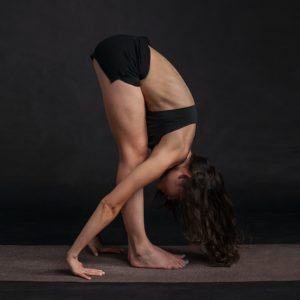The Principles of Exercise: FITT VP MODEL
I’ve been training for almost 10 years now and I wish I knew about the FITT VP model when I started my fitness journey. The FITT VP model is an evidence-based recommendation used as a guide for creating your own workout plan. It is researched and created by the American College of Sports Medicine.
The FITT VP stands for Frequency, Intensity, Time, Type, total Volume, and Progression.
Frequency (how often)
Frequency is calculated by the number of DAYS per week that are dedicated to your workout plan. The frequency recommendation for Cardiorespiratory fitness (Endurance Training) is 3-5 days for adults. For Resistance Exercise (Weight Training) the recommended frequency is 2-3 days per week.
Intensity (how hard)
The intensity of an exercise is the rate at which your exercise is being performed. This is categorized from very light, moderate, to vigorous intensity.
Depending on your current physical fitness and goal, intensity is calculated differently.
Intensity for Cardiorespiratory Fitness is calculated by estimating your maximal heart rate and staying within the intensity recommendation for Cardiorespiratory Fitness.
Resistance Exercise intensity is calculated by obtaining your 1 repetition max and staying within the intensity recommendation for Resistance Exercise.
Rated Perceived Exertion or RPE can also be used as a measurement for intensity.
Time (duration or how long)
Exercise Time is measured by the amount of physical activity time per Session, Day, and Week.
Cardiorespiratory Fitness is 30-60 minutes a day of moderate-intensity exercise or greater than or equal to 150 minutes per week and 20-60 minutes a day of vigorous-intensity exercise or greater than or equal to 75 minutes per week.
As for Resistance Exercise, there is no specific time recommended.
Type (mode or what kind)
There are different types/modes of exercise. The different types/modes of exercise can be broken down between Aerobic Endurance, Strength, Flexibility, and Balance. It’s possible to mix up your workout plan while adhering to the exercise recommendation.
Volume (amount)
Exercise volume or quantity is the product of Frequency, Intensity, and Time. The more you work out the more you will burn.
Cardiorespiratory Fitness Volume can be calculated by how many steps you walked weekly.
Resistance Exercises Volume is calculated by sets and repetitions. The recommendation for resistance exercise is 2-4 sets with 8-12 repetitions per set with 2-3 minutes rest intervals.
Progression
Progression is when you increase any category of the FITT VP formula. It is best to increase intensity first then time/duration. If you go too hard in the beginning not only you’ll burn yourself out but you’ll increase the risk of injuring yourself.
Think of progression as stairs and the railing of the stairs as the FITT VP model. If you use the railing as support you’ll get up to the top safer and faster.
Here’s an example of a workout schedule that follows the frequency category for Resistance, Cardio, and Flexibility.
Mon | Tue | Wed | Thur | Fri | Sat | Sun |
Push Exercises | Cardio & Flexibility | Pull Exercises | REST | Cardio & Flexibility | Legs & Core Exercises | REST |
ACSM RECOMMENDATIONS
CARDIOVASCULAR TRAINING:
Cardiovascular Training | |
Frequency | ≥ 5 days per week of Moderate Exercise, or ≥ 3 days per week of Vigorous Exercise, or ≥ 3-5 days per week of Combination of Moderate and Vigorous exercise. |
Intensity | Moderate and/or Vigorous-intensity for most adults. Light to Moderate Intensity for deconditioned individuals |
Time | 30-60 min per day of Moderate Exercise, or 20-60 min per day of Vigorous Exercise. < 20 min per day for individuals who are sedentary. |
Type | The regular exercise involves major muscle groups. |
Volume | Increasing step count by ≥ 2,000 steps per day to reach a daily step count of ≥ 7,000 steps. |
Progression | Increasing any of the FITTV categories. To reduce the risk of injury, start low and go slow. |
RESISTANCE TRAINING:
Resistance Training | |
Frequency | 2-3 days per week of each major muscle group. |
Intensity | Moderate to Vigorous Intensity for novice to Intermediate exerciser to improve strength. Vigorous to very vigorous intensity for experienced strength trainers. Very Light to Light for Older and Sedentary Individuals. |
Time | ACSM has no specific duration of training that has been identified for effectiveness. |
Type | Movements that require the use of major muscle groups. Multi-Joint movements are recommended for most adults. Single joint movement is recommended after multi-joint movements. |
Volume | 8-12 reps to improve strength and power 10-15 reps improve strength in middle-aged and older individuals. 15-25 reps to improve muscular endurance. |
Progression | You can gradually increase the resistance, and/or more repetitions per set, and/or increased the frequency of your workouts. |
FLEXIBILITY TRAINING
Flexibility Training | |
Frequency | ≥ 2-3 days per week. Daily is the most effective. |
Intensity | Stretch to the point of feeling tightness or slight discomfort. |
Time | 10-30 seconds static stretch for most adults. 30-60 seconds static stretch for older individuals. |
Type | Flexibility exercises that use each major muscle-tendon are recommended. Static Flexibility, Dynamic Flexibility, Ballistic Flexibility, and PNF flexibility. |
Volume | 2-4 reps are recommended. 60 seconds of total stretching time is recommended. |
Progression | ACSM has no methods for optimal progression. |







